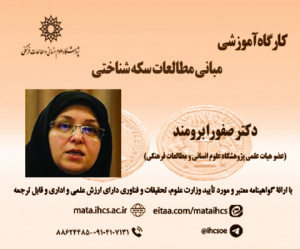چشم و وجود: تأملاتی در ادراکِ بصر محورانه حقایقِ وجودی اشیاء در فلسفه متعارف اسلامی (مقاله علمی وزارت علوم)
درجه علمی: نشریه علمی (وزارت علوم)
آرشیو
چکیده
در عرف فیلسوفان مسلمان، علم حقیقی که به وجودات (خارجی یا ذهنی) ثابت تعلق می گیرد، یا از راه تجرید کلّی طبیعی است یا دیدن مُثُل افلاطونی. بینایی هر چند برخی آنرا اشرف حواس گفته اند، یکی از حواس ظاهر برشمرده شده است و چشم صرفاً ابزارِ شکارِ یکی از محسوسات یعنی امور بصری است نه چیزی بیشتر؛ اما حضور همه جانبه امر بصری–که در اینجا بیناییدن خوانده می شود- در توصیفات اینان از ادراک حقایق وجودی، خواه این توصیف تمثیلی باشد، خواه سرراست، قابل مشاهده است. این جُستار ضمنِ اشاره به پیوندِ ناگسستنیِ بینایی و ادراکِ حقایقِ اشیاء، بر فرایندِ بصرمحورانه ماهیّتِ عقلانیِ ادراک شده، در عالَمِ ایده ها و کُلّیِ طبیعی درنگ خواهد کرد. در این راه پس از تأملی کوتاه بر توصیفات افلاطون و ارسطو که سرنمون این دو دیدگاه هستند، به بررسی بیناییده شدن در آنچه مشهور به فلسفه اسلامی است، پرداخته خواهد شد. روش این پژوهش طرحِ یک آزمونِ ذهنی است که طی آن دیگرگونگیِ ادراکِ حقایقِ وجودیِ اشیا، در صورتِ سلبِ باصره بررسی خواهد شد؛ یعنی فرض گرفته می شود صاحب یک نظریه نابینا باشد. سر آخر به اینجا رسیده خواهد شد که دست کم این دو شیوه مدعی ادراک وجودات حقیقی به هیچ روی از درازدستی چشم و سیطره بینایی دور نتوانند شد و هم هنگام این نوشتار با تأمّلِ بر نقشِ پُررنگِ بینایی در کاوش هایِ هستی شناختی، نوعی ایدئالیسمِ بصرمحورانه و بیناییده را در سطحِ معرفت شناختی پیشنهاد می دهد که مبتنی بر آن، سخن گفتن از هستی شناسی محض و رسیدن به وجود اشیاء آنچنان که هستند، بدون پیشفرض چشم و بینایی، سخت و یا شاید نشدنی می نماید.The Eye and Existence: Reflections on the Ocularcentric Perception of the Ontological Truths of Things in Conventional Islamic Philosophy
In Muslim philosophical tradition, true knowledge of entities (external or mental) is acquired either through the abstraction of natural universals or the contemplation of Platonic forms. While vision is often esteemed as the noblest sense, it remains an external faculty, with the eye serving merely as a tool for perceiving visual phenomena. Yet, the pervasive role of the visual—termed here as "بیناییدن" (seeing)—in descriptions of perceiving existential truths, whether metaphorical or direct, is undeniable. This essay explores the inseparable link between vision and the perception of truths, focusing on the visually oriented process of grasping intelligible essences in the realm of ideas and natural universals. After briefly examining Plato’s and Aristotle’s paradigmatic views, the study investigates the concept of "بیناییدن" in Islamic philosophy. Using a thought experiment that assumes a blind theorist, it examines how the absence of vision alters the perception of existential truths. The study concludes that these methods of perceiving true entities remain deeply tied to the dominance of vision. Simultaneously, it proposes a visually oriented idealism at the epistemological level, suggesting that pure ontology—understanding existence as it is—without presupposing vision, is difficult, if not impossible. This highlights the profound influence of vision on ontological and epistemological frameworks.







